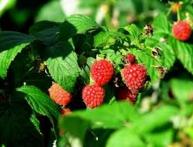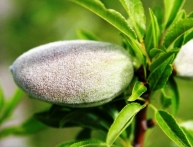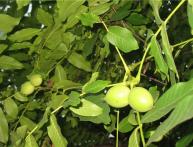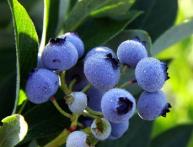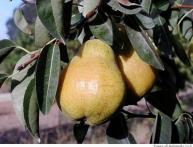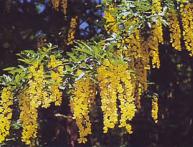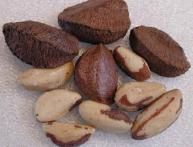Meyer lilac Palibin: propagation, proper planting and care

An extraordinary number of poetic words are dedicated to the flowers and aroma of lilac. Brought to Europe at the beginning of the 17th century from Turkey, the plant immediately became popular. A huge number of romantic stories, fairy tales and legends are associated with blooming lilacs. Currently, lilac is gaining popularity again. It is actively used in landscaping settlements and private areas.
Most varieties lilac They are medium-sized bushes, although there are also very large varieties and hybrid forms. Against this background, Meyer lilacs are distinguished by small compact bushes. Sometimes it is called balcony lilac. Let's try to understand the agricultural technology of its cultivation.
Content:
- Features of Meyer lilac, choosing a place for it
- How to plant Meyer Palibin lilac
- Caring for Meyer lilacs
Features of Meyer lilac, choosing a place for it
Meyer's lilac was discovered in China, where it has been cultivated for hundreds of years, but no wild form of this lilac has been found. It differs from most species in the size of the bushes and flowering time. The height of the shoots of Meyer lilac can be up to 1.8 m. Varieties and hybrids no higher than 1.2 - 1.5 meters have been obtained from it.
Also, Meyer lilac tends to enter the flowering season already when the height of the bushes barely reaches a quarter of a meter. It blooms in June. In addition, at the beginning of autumn, Meyer's lilac may bloom a second time.And although the repeat bloom is more modest, the fragrant pink-purple flowers are pleasant to see in the fall. At the same time, the plant is unpretentious; it tolerates very modest living conditions, lack of moisture and poor soil.
Lighting and temperature conditions
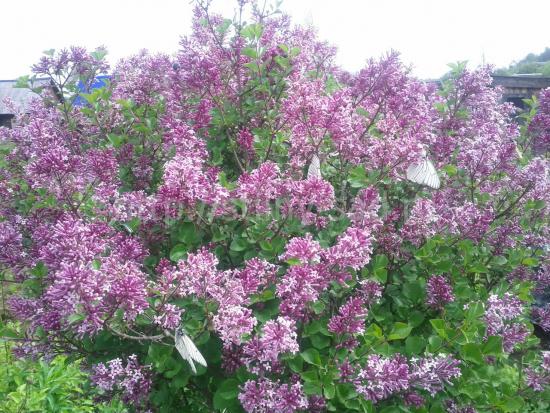
For lilacs, it is better to choose well-lit places. It is possible to grow in light shade, but the decorative and varietal qualities are most pronounced in good lighting. In frosty winters, many varieties of Meyer lilac may freeze, but recover fairly quickly. To avoid this, it is advisable to plant in places protected from winter winds.
Soil and moisture
The soil in the area where Meyer lilac will grow should be fairly fertile, moderately light, water- and breathable. The groundwater level is not of great importance for this species, since the size of the root system is quite modest and most of the roots are located near the surface.
Lilacs tolerate a lack of moisture quite well, especially when it comes to Meyer lilacs, but still for good development it is necessary to ensure good moisture without stagnation of water. Regular and prolonged waterlogging can cause rotting of the root system.
How to plant Meyer Palibin lilac
Lilacs reproduce:
- seeds
- cuttings
- root shoots
- vaccinations
For amateur breeding of varietal Meira lilacs, it is most convenient to purchase ready-made seedlings. The seed propagation method is unlikely to be suitable, as most varieties of this miniature lilac are hybrid forms. Reproduction by grafting is more suitable for professionals.
This is due to the need to grow rootstocks and the skills of carrying out the grafting itself, and the difficulties of obtaining grafting material from varietal plants. If it is possible to prepare cuttings from an adult mother plant, then this method is the most acceptable.
How to prepare and root cuttings
The time for harvesting green cuttings may coincide with the flowering of lilacs, so you need to choose a young green shoot that does not have buds or flower buds. Cut cuttings about 20 cm long, with 2 - 4 buds or leaf blades. The upper cut is straight, the lower cut is oblique. Immerse the cuttings in the stimulant solution for several hours.
After this, bury them in a greenhouse with peat and sand soil. Embed into the soil to a depth of approximately two cm. For rooting, you need to maintain the temperature 3 degrees higher than in the air and monitor the humidity. Rooting occurs in late August - early September. Place in a permanent place cuttings most convenient for next summer.
Planting lilacs
If planting material has been received, it is still more convenient to plant lilacs in the summer. It is best to do this in July - August. The size of the planting hole should correspond to the roots of the seedling. Usually this is 0.5 m by 0.5 m. If the soil is poor, then the hole should be about a third larger. In this case the following is included:
- 0.2 kg ash
- 15 kg of humus or compost
- a spoonful of phosphate fertilizers

The time for planting lilacs is chosen in cloudy weather or in the evening. The seedling is inspected before planting; if the root system is open, damaged roots are cut off. If the root system is too powerful, then the long roots are shortened to 30 - 35 cm. After the roots of the seedling are covered with soil, it is lightly compacted.After planting, ground shoots are also slightly shortened; it is enough to trim no more than 2 buds from each shoot.
Caring for lilac seedlings after planting.
As soon as the bush is planted, it is watered abundantly. After this, the entire space near the trunk is mulched. This is done using peat, the thickness of the mulch layer is about 5 cm. Also in the first year after landings The ground under the lilac is loosened 3 - 4 times to a depth of about 6 cm. In subsequent years, the seedling is cared for in the same way as adult plants.
Caring for Meyer lilacs
From the second year after planting, Meyer lilac needs to be fertilized with nitrogen fertilizers. Over the summer, it is enough to add 60 g of saltpeter in two or three doses. You can dilute the slurry in a ratio of 1 to 5 and water the lilac bushes. Water the plant half a meter from the trunk. In autumn, 30 - 40 g of phosphorus and potassium fertilizers are applied once per season.
Meyer lilac needs abundant and regular watering during the flowering period. The rest of the time it is watered only in dry summers.
In the first two years after planting, Meyer lilac bushes are not pruned, since its shoots grow rather slowly and do not give an increase of 10 cm every year. In the third year, all weak shoots are cut out. In addition, the crown of this lilac can be shaped into a ball, and the bush itself can be grown in a standard form. It is this lilac that can be grow in containers and used for spring forcing flowers.
Video with simple tips for caring for lilacs:




